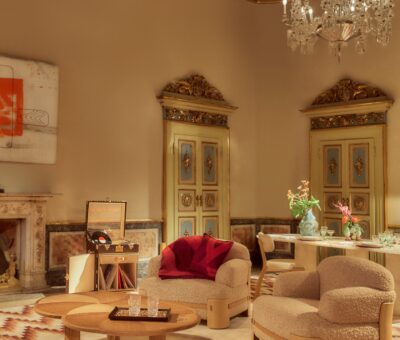Meet Japandi: The Design Approach That Is Taking Over the World by Storm
The hectic life pace and overcrowded urban environments have lead to an entirely opposite tendency in interior design: minimalism. This is exactly the reason why Scandinavian style has been one of the most popular design approaches for years. However, designers are inspired by a décor coming from entirely different part of the world – Asia. Both of these styles share similar values so it was just a matter of time before we witness their marriage. Finally, that time has come, and now we are seeing the birth of Japandi (Japanese + Scandinavian), movement that draws inspiration from both these approaches and takes the best of both.
Image source: smh.com.au
Japanese Contribution
Before we get to the specifics of this trend, we should discuss what both spouses bring into this marriage. The Japanese style is mostly inspired by the concept of wabi-sabi, which nurtures the idea of finding beauty in imperfection. Also, this principle puts a strong emphasis on reconnecting with nature, being moderate, having self-control and being modest. Décor-wise, that means imperfect shapes, rough edges and asymmetry.
Image source: domain.com.au
They Lived Happily Ever After
By the authority invested in the interior design professionals around the globe by creativity, inventive mind and thinking outside of the box, we know pronounce these two styles married. And what do we get out of that marriage? A union of simplicity, perfect lines and odd shapes. To be more specific, here are some of the most notable characteristics of Japandi:
- Free of any kind of clutter.
- Natural wood (pale wood tones come from the Scandinavian side of the family, while darker tones come from Japan).
- A color palette of muted tones and cool undertones.
- Combination of clean lines and raw imperfect edges.
- Large windows that allow plenty of natural light.
- Monochrome accessories.
- Handcrafted items.
- Oriental shapes.
- Black and white accents.
- Indoor plants.
Image source: pinterest.com
Changing Home Décor as We Know It
So, when we observe everything we’ve learned so far, what can we say is so different about Japandi? Although at the first glance the two sides of this décor trend are almost the same, when put together, they offer new versatility and practicality, as well as a more extensive color palette to explore. When separate, they can be quite extreme in design rules, but working as a hybrid, they offer solutions that are far more acceptable for both interior designers and homeowners.
Combining two different design styles is something that we would otherwise call eclectic, but in this case, it is far from being so. Japandi is revolutionizing the term “eclectic” and becoming the next phase of joining two cultures in one unified whole. Although this new design movement has the potential to stand shoulder to shoulder with some already established timeless design styles, such as Mid-century modern, rustic and Mediterranean, its simplicity, joined with soulfulness and warmth can certainly guarantee that.
Image source: pinterest.com
On the Scandinavian Side…
Scandinavians are not without their merits either. They brought everything this style is so loved for – high-functionality, clean lines, neutral colors, a lot of natural light, and simple forms. It also insists on the strong presence of natural elements, from stone and wood to indoor plants and wool floor rugs. We could say that the most obvious difference between these two styles is that the Japanese one finds beauty in perfection, while Scandinavian considers perfection to be the essence of beauty.
Image source: domain.com.au
Ideas on Implementing Japandi in Our Homes
Now that you’ve seen the basic characteristic of this approach, you probably have some idea about how to implement it in your own home. However, this can be a tricky path to follow, since you can end up with unbalanced look, which is the opposite of Japandi’s aspirations. The goal is to use similar amounts of both worlds – complement the pale wood with deep and dark tones (e.g. use two dark-wood dining room chairs and two pale-wood), include both clean-shaped graphic accessories and imperfect items such as racu ceramics famous for its uneven patterns, use both oriental furniture with ornate details and modern clean-lined Scandinavian pieces.
Author’s Bio: Lana Hawkins is an architecture student and the editor-in-chief on Smooth Decorator. She enjoys writing about interior decoration and landscaping. Lana is interested in sustainability and green building, and that’s where she gets most of her inspiration.
You might also like...
-
Embracing Neutral Elegance 2025: A Johannesburg Apartment Transformation by GLE Interiors

In the heart of Johannesburg, GLE Interiors undertook a captivating project to design a young client’s apartment in January 2025, fully embracing the elegance of ...
-
Louis Vuitton Debuts Daring Objets Nomades & Trunks Collection at Milan Design Week 2025

Ushering in a bold new era of luxury, Louis Vuitton unveiled its latest Objets Nomades and Trunks Collection at Milan Design Week 2025, setting an ...
-
The Inspiring Journey of GLE interiors

A deep-seated passion for aesthetics led to the creation of GLE Interiors. Today we hear from the founder of this incredible brand – sharing the ...
-
Brand Creative: A Dynamic Creative Agency On The Forefront of Design

With offices in Dubai, India and South Africa , Brand Creative is a dynamic creative agency specialising in human-centric brand strategy, interior design and graphic ...



























